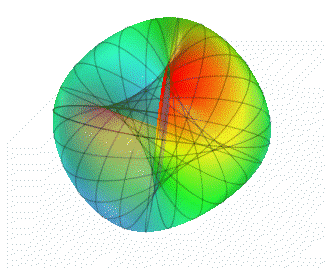schizobeyondpills wrote: ↑17 Oct 2020, 03:21
theres no need for vsync. its flawed thinking. only latency is the limit between human engineering (digital) and analog reality.
Terminology Disambiguation Alert
- VSYNC as in driver setting
- VSYNC in the perspective of framerate-vs-refreshrate motion smoothing (fps=Hz)
- VSYNC as in an analog signal embeded between refresh cycles, as part of VBI
- VSYNC as a wasteful digital equivalent of analog signal
- VSYNC as a miniaturized marker or comma-separtor between compressed frames
- etc, etc, etc.
For any finite refresh rate system system (VRR or non-VRR, high-Hz or low-Hz), a derivative of a frame separator (synonym of one sub-definition of VSYNC, under our Blur Busters terminological standard (which is sometimes optimized to fit advanced-mainstream; whether you like it or not).
Another word is VBI (Vertical Blanking Interval) of which the VSYNC signal is a subset thereof. Sometimes VBI and VSYNC is used interchangeably (by accident or by intention) because they separate refresh cycles, though VSYNC as a signal, is just a subset of VBI (also including Vertical Front Porch and Vertical Back Porch); also covered in
Custom Resolution Utility Glossary as well as
Quick Frame Transport Threads or the
Next-generation scanrate: Global Scanrate/F-SRR for readers who want to read some Popular Science style explanations of the raster video signals and their synchronization-related markers such as VSYNC or VSYNC-equivalents.
NOTE: Obsoleteness of VSYNC as a motion-smoothing technology definitely increases as the higher the frame rate and the higher the refresh rate, a display begin to behave like a per-pixel variable refresh rate display, thanks to the ultrafine granularity of refresh cycles. That's why 50fps stutters are dramatically less at fixed-Hz 240Hz than with fixed-Hz 240Hz. Stutter amplitudes 1/4th as much, and stutter/jitter often at higher frequencies that begin to blend into flicker fusion thresholds and/or the display's own persistence motion blur (tinier stuttiers hidden in the display persistence when running low framertes on a fixed-Hz ultra-high-Hz display). Latencies of VSYNC ON, VSYNC OFF, and VRR also converge closer to identicalness (zero), the higher the refresh rate you go, so this is one angle of "VSYNC becoming more obsolete". At 1000Hz (and continuing well beyond where engineering-feasible and beneficial; Vicious Cycle Effect permitting); almost any framerate looks like native Hz / VRR framerate (on lower Hz) even if the 1000Hz is a fixed-Hz monitor.
However, from a signal layer topology, a form of synchronization separator between refresh cycles will likely continue to be used for a long time for fixed-Hz and variable-Hz -- as long as framerates/refreshrates are still finite. But the old-fashioned "VSYNC" display signal terminology will continue to carry-over to such refreshing workflows, even if VSYNC becomes slowly a terminological misnomer when it's just a H.268 frame marker flag or a GPU-framerate-amplification delivery mechanism instead of a raster based delivery mechanism, or some other as-yet-invented display signal that replaces a raster workflow. Until things go framerateless encoding -- if ever -- though even that probably will still have things like a 'recommended display rates' mechanism encoded within;
VSYNC terminology is fuzzy but... Until framerates become analog (framerateless encoding mechanisms), synchronization markers or timestamps or frame-separators or refresh-separators (roll your dice and choose your favourite term) continue to be necessary in all framerate signals, files, and encodings. Whether be H.264 compression or be a DisplayPort or an analog TV broadcast or when boundaries later starts to blur (e.g. framerateless DisplayPort 7.0 in year 2043 or 2046 or whatever becoming a subpart of framerateless H.269 or H.271 standard or whatever) -- and sometimes VSYNC terminology are appolied to these anyway when used in an interactive display context, to chagrin of some by-the-book technicians. But for the purposes of "
all-definitions-of-VSYNC-obsolete", it likely won't happen until finite-framerate systems become future conceptual framerateless/vectorized/4dimensional/timecoded-photon/whatever encoding workflows.
Yes, we even think that far ahead to the eventual sunsetting of raster this century.
Mind you, VSYNC-required workflows isn't necessarily superior or worse latency-wise; considering the overlapping latency venn diagrams of ultralowlag high finite-framerate workflows and slightly more laggy complex-encoded framerateless workflows. There's electronics overheads, whether from processing/transmission/decoding/etc considerations.
Also, thanks to limits (like the brick wall of CPU processing speeds stopping increasing) -- higher refresh rates and display rates may require some parallelism in the display, see
Custom OLED Rolling Scans -- Custom Built OLED Monitor but that can also piggyback onto
Modularized jumbotron LED panels, which impacts latency considerations (delivery and/or buffering for shingled parallel refreshing of multiple trailing refresh cycles).


